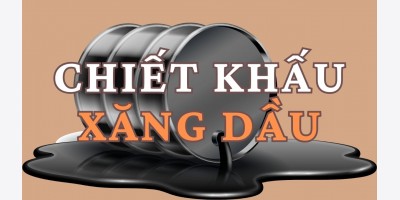Dầu thô tăng giá ngày thứ 3 sau khi OPEC không thông qua nâng mức sản lượng
Dầy thô tại thị trÆ°á»ng New York hôm qua tăng giá sau khi OPEC, lần đầu tiên trong vòng ít nhất 20 năm Ä‘ã không đạt được nhất trí vá» chỉ tiêu sản lượng và dá»± trữ dầu thô Ä‘ã giảm mạnh hÆ¡n so vá»›i dá»± báo của giá»›i phân tích.
Giao dịch sau tăng 0.4% sau khi tăng 1.7% hôm qua. Ông Mohammed ALiabadi, bá»™ trưởng dầu má» Iran, chủ tịch Ä‘Æ°Æ¡ng nhiệm OPEC cho biết, OPEC sẽ vẫn duy trì mức sản lượng hiện tại. Äoàn đại biểu các nÆ°á»›c vùng vịnh Ä‘ã Ä‘Æ°a ra ý kiến rằng nhóm các nÆ°á»›c này nên tăng chỉ tiêu sản lượng. Má»™t báo cáo của chính phủ Mỹ Ä‘ã công bố lượng trữ dầu thô của Mỹ Ä‘ã giảm mức lá»›n nhất kể từ tháng 12 năm ngoái.
Ông Kyle Cooper, giám đốc nghiên cứu tại IAF Advisors – Houston cho ý kiến “Thị trÆ°á»ng Ä‘ang chứng kiến những phản ứng mạnh mẽ trÆ°á»›c thông tin của OPEC bởi má»i thông tin Ä‘á»u dá»± báo hạn ngạch sản lượng chắc chắn sẽ tăng. Ngoài ra, giá tăng còn là vì số liệu báo cáo vá» mức giảm lá»›n ngoài dá»± Ä‘oán trong dá»± trữ dầu thô.”
Dầu thô giao tháng 7 tăng 38 cent lên mức 101.12 USD/thùng trong giao dịch Ä‘iện tá» tại sàn New York Mercantile Exchange và đạt 101.09 USD/thùng lúc 9:09, giá» Sydney. Hôm qua giá Ä‘ã tăng 1.65 USD lên 100.74 USD/thùng, mức cao nhất từ sau hôm 31/5.
Hôm qua, dầu thô Brent giao tháng 7 tại sàn ICE Futures Europe – London tăng 1.07 USD, tÆ°Æ¡ng Ä‘Æ°Æ¡ng 0.9% kết thúc phiên giao dịch ở mức 117.85 USD/thùng, mức cao nhất từ hôm 4/5.
Giao dịch chuẩn châu Âu có giá cao hÆ¡n 17.11 USD/thùng so vá»›i dầu thô Mỹ. Mức chênh lệch hợp đồng tăng lên ká»· lục 19.54 USD hôm 21/2. Chênh lệch trung bình năm ngoái ở mức 76 cent.
Oil Gains for Third Day as OPEC Fails to Agree Quotas; U.S. Supplies Drop
By Mark Shenk and Ben Sharples - Jun 9, 2011 6:10 AM GMT+0700
inShare
More Print Email
Oil rose for a third day in New York after OPEC failed to reach an agreement on production targets for the first time in at least 20 years and U.S. crude inventories fell more than analysts forecast.
Futures gained as much as 0.4 percent after climbing 1.7 percent yesterday. The Organization of Petroleum Exporting Countries will maintain its current output for now, said Mohammad Aliabadi, the acting Iranian oil minister and OPEC president. A Gulf delegate said June 7 that the group would increase production targets. A U.S. government report showed crude supplies dropped the most since December.
“You’re seeing the big reaction to the OPEC news because a quota increase has been expected,” said Kyle Cooper, director of research at IAF Advisors in Houston. Prices also climbed after “a bigger-than-expected fall in inventories,” he said.
Crude for July delivery rose as much as 38 cents to $101.12 a barrel in electronic trading on the New York Mercantile Exchange and was at $101.09 at 9:09 a.m. Sydney time. The contract yesterday climbed $1.65 to $100.74, the highest settlement since May 31. Prices are up 36 percent the past year.
Brent crude oil for July delivery climbed $1.07, or 0.9 percent, to end the session at $117.85 a barrel on the London- based ICE Futures Europe exchange yesterday. It was the highest settlement since May 4.
Proposed Increase
The European benchmark contract traded at a premium of $17.11 a barrel to U.S. futures yesterday. The difference between front-month contracts in London and New York reached a record $19.54 on Feb. 21. It averaged 76 cents last year.
Saudi Arabia, OPEC’s biggest producer, Kuwait, Qatar and the United Arab Emirates were ready to supply more oil to the market, according to Saudi Arabian Oil Minister Ali Al-Naimi. The four nations proposed a 1.5 million barrel-a-day increase from the current 28.8 million, he said.
Libya, Angola, Ecuador, Algeria, Iran and Venezuela were opposed to higher limits, according to Naimi. The 11 members subject to quotas produced 26.22 million barrels a day last month, 1.375 million above their target, according to Bloomberg News estimates. Iraq is exempt from the targets.
OPEC’s failure to agree shows that some of the group’s members have limited spare capacity, JPMorgan analysts including Lawrence Eagles wrote in a note yesterday. It will be a “stretch” for Saudi Arabia alone to add the 1.9 million barrels a day needed to meet the 30.87 million barrels in third- quarter demand OPEC forecasts for its oil, the analysts said.
U.S. Inventories
U.S. crude stockpiles decreased 4.85 million barrels to 369 million last week, the biggest decline this year, according to the Energy Department. A 1.38 million-barrel drop was forecast, according to the median of responses in a Bloomberg News survey of 14 analysts.
Gasoline supplies climbed 2.21 million barrels to 214.5 million, according to the Energy Department. They were forecast to rise 1.1 million barrels, the Bloomberg News survey shows.
Global oil demand will climb to 89.18 million barrels a day during the third quarter, the highest level of 2011, the U.S. Energy Department said June 7.
Prices declined for options betting on lower oil. The most- active contract yesterday was the July $95 put, which fell 30 cents to 38 cents. The most-active call option, a bet that prices will rise, was the July $105 call, which climbed 10 cents to 41 cents.








